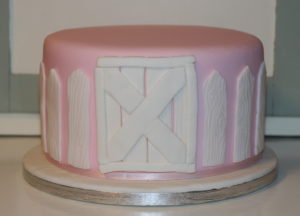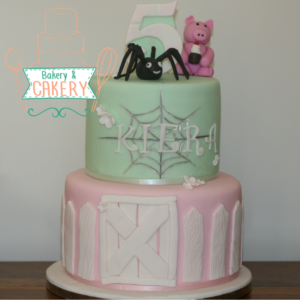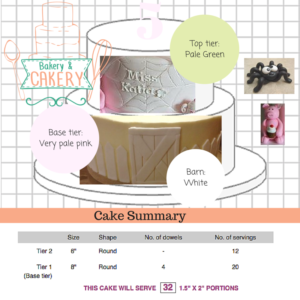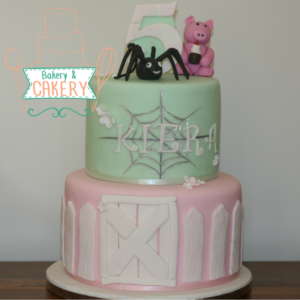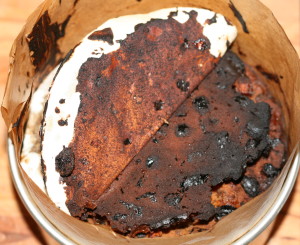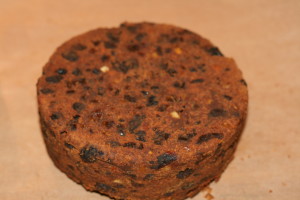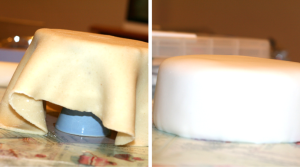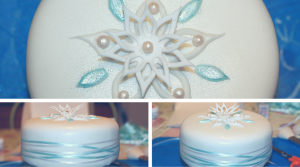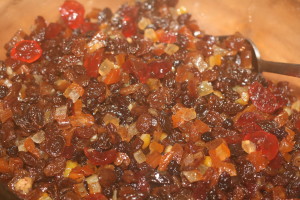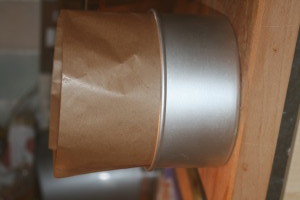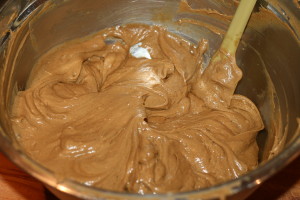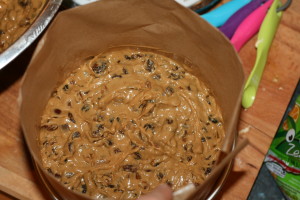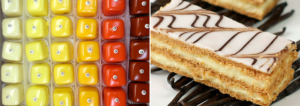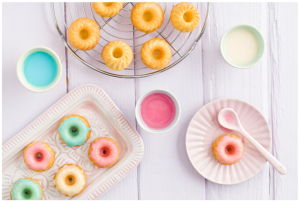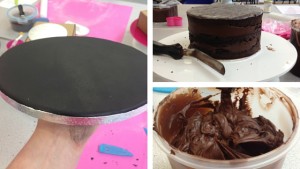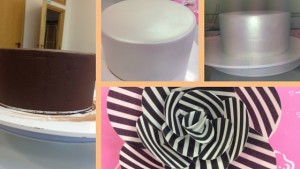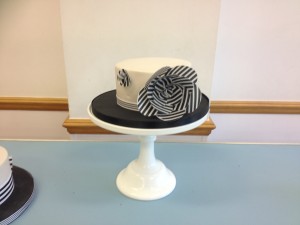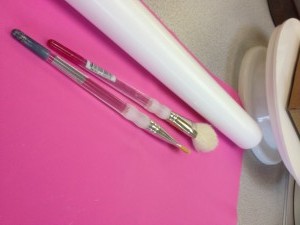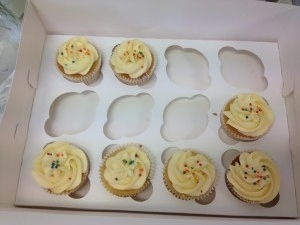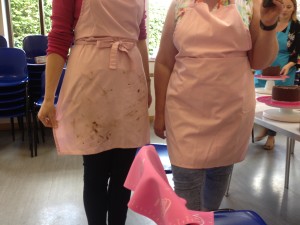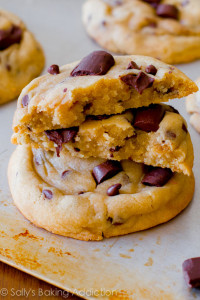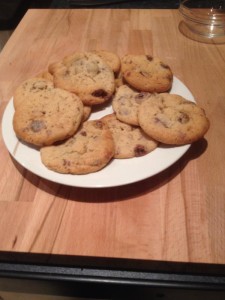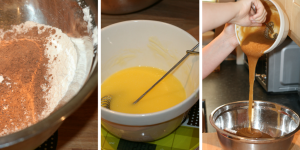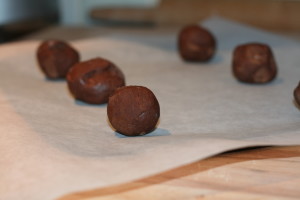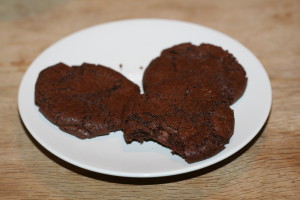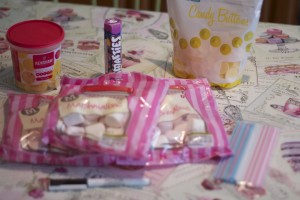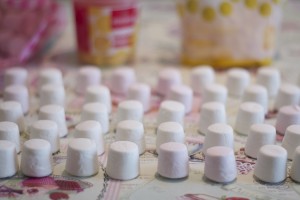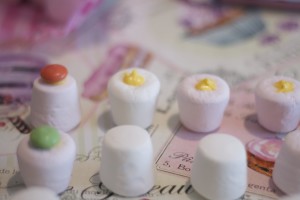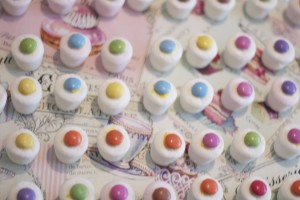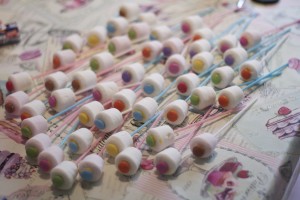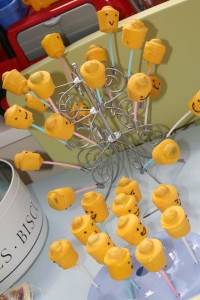GDPR Key Terms
Sugar and Crumbs Jaffa Sugar Cookies
Raspberry Ripple Buttercream and Rich Chocolate Cake
The Secret to White Buttercream
Cinderella Button Sugar Cookies
Cinderella Carriage Cake
Dried Apricot And Cinnamon Mini Bundt Cake
Billing for Baking - The Cake Cost Conundrum
I belong to a whole host of baking forums and questions I see come up over and over are 'How do I price my cake?' and 'Do you think the cost is too much for this?' or 'My client says this is too expensive'. Never 'Is this too cheap?' or 'I turned down a customer because they didn't understand the value of my work'
There are, of course, plenty of bakers bemoaning clients asking for high-end cakes at supermarket prices, but I don't blame customers looking for a bargain. You can't blame someone who is not in your industry for not understanding the effort required to achieve something. Or the skills you have taken the time, effort and cost to develop. Or the cost of tools and equipment.
In any industry, it is any given professionals role to help the customer understand the value of what they are buying.
Now, I am not a professional baker. I don't charge people for cakes. I mostly make them for myself to eat. That makes me a Hobby Baker. But I do own my own non-baking business and the issue of what to charge for my services and expertise is not alien to me. So I thought I'd take some time to talk about just that. Not cake, not creativity, not worrying your work isn't good enough, not fretting that because you work from home that means you should be cheap. But business. Cold, hard business.
Baking Business
Running a business is hard work. It requires your heart and soul but it NEEDS your head to survive.
So, from a business point of view when you are considering what to quote for your work what you need to do is this:
Add up your costs
For making a cake this is your ingredients plus resources (like electricity/gas) and materials as well as a % of the cost of your business existence, such as rent and marketing. Yes, all of it.
For a cake that needs a particular mold or modeling tool, you wouldn't charge for the whole tool as you will use it again or already have it - so charge a small % of what that tool cost to buy. You may need to replace it at some point so you have to cover that cost. Think of it as your equipment 'wear and tear'.
Your time is also a cost. It is not your profit. If you spend 5 hours making a cake and decorating it (and you will likely spend much more than that) then that is time you aren't out with your friends or at another job earning a living. It costs you something to do it. So work out an hourly rate you are happy with (NOT MINIMUM WAGE) and add that time in.
Once you have that total, that is your cost rate. Meaning if you charged that amount of money, you would break even and would have worked for no income. You also have no cash to invest in your business's future, like setting up a website, doing marketing, buying new tools and equipment or improving your skills with classes or books and so on.
Add your profit
You add a % on top for profit. That % is flexible and is really up to you, but I've worked alongside creative industries my whole working life and the minimum I've seen in viable businesses is 15%. The most common is between 20-40% and high end "in demand" people can charge 100% and higher.
If this is all sounding too expensive then let's look at an example. If you made a cake that took you 5 hours, and you are going to pay yourself £10 per hour and the materials, ingredients and equipment comes to £50 (just to keep it simple) then your cost price is £100. And for that, you have made no money yet. So add (minimum) 15%. That cake is charged out at £115. So you have worked for 5 hours and you've made £15. £3 per hour, profit. Does that sound too much now? Does £120 or £140 still sound so unreasonable? The cost of a cake isn't determined by how you or the client feel, it's cold hard facts. The price of the ingredients isn't set by you and whether or not you think that flour is "just" ground up wheat so it shouldn't cost "so much".
What Else Affects Price?
What you also have to consider with your final price is your marketplace. If you are in a big bustling wealthy city like central London your rates (gas/electricity/rent etc) will be higher so you need to charge more to cover them, even as a home baker. And you can charge more because the average cost of your competition will be higher. If you are in an area with very few competitors then potential customers don't have as many companies to choose from and that keeps prices from being driven down. If you are in an area with a lower than average income and lots of competitors then you may feel like you want to lower your prices to compete.
That is certainly an option, but remember that cost is not the only thing that separates one company from another. I know a great baker/decorator who does very elegant high-end cakes and beautiful cupcakes. She gets a lot of inquiries for novelty cakes or sculpted cakes but they just aren't her thing and she has no interest in making them. Someone else will get that business and they do not need to compete with my friend on price to do it. It's a unique selling point - find yours - what do you do better than your competition? or different from your competition?
Know Your Marketplace
In order to answer those questions you have to know a lot about your competition - so research them. Google companies or sole traders in your area making cakes. Look at their websites and social media accounts to see what work they do. Some people publish prices for set designs and sizes so you can gather that information as well.
Don't think that this is underhanded. All (smart) businesses research their marketplace and competition to see if they have a viable business model. It would be underhanded is calling up competing bakers and stealing their IP and waste their time requesting quotes for things. I've even heard of people booking consultations just to take up a slot that a real customer now can't. That's unethical. If you wouldn't want someone to do it to you, don't do it to them, this is someone else's livelihood after all. If you can't make your business work without being devious, you don't have a functional business at all.
Be Practical
Think about your work load as well. If your prices dictate that you need to make 3 cakes a week to make a living is that achievable? If your prices dictate you need to make 25 cakes a week to make a living is that achievable? Can you generate that many orders in your area? Do you want to consistently be working 60 hour weeks? Does a 60 hour week look like a holiday to you from where you are now? What 'profit per cake' will mean that you can keep doing this and still love it? And not burn out. I don't want you to burn out.
What Are You Worth?
I know that's a lot of information, but I see so many creative people across industries undersell themselves. Work themselves into creative oblivion and shut up shop, not because they didn't have enough work but because they weren't generating a profit. This is especially true in the home craft market. If you undervalue yourself, your customers will too.
Let me tell you a little story.
The story goes that the great Pablo Picasso was sketching in the park when a woman approached him. “It’s you — Picasso, the great artist! Oh, you must sketch my portrait! I insist.” (Cheeky isn't she) So Picasso agreed to sketch her. After studying her for a moment, he used a single pencil stroke to create her portrait. He handed the women his work of art.
“It’s perfect!” she gushed. “You managed to capture my very essence with one stroke, in one moment. Thank you! How much do I owe you?” (at least she knew she should pay for his work)
“Five thousand dollars,” the artist replied.
“B-b-but, what?” the woman sputtered. “How could you want so much money for this picture? It only took you a second to draw it!”
To which Picasso responded, “Madame, it took me my entire life.”
This story may not be true and could be applied to every artist in history but replace 'It only took you a second' in the story with 'it's just cake'. How many of you have heard that when sending a quote? True enough it's just eggs, flour, sugar and butter but it isn't 'just cake' it's so much more than the sum of its parts. And if it were 'just' anything then the person trying to buy it from you could 'just' do it themselves. So they aren't 'just' buying a cake from you, they are buying your knowledge, creativity and time to do something they can't. Or won't.
Cheap Words Means Cheap Cake
Don't ever allow the customer or yourself to use terms that diminish the product you are providing. It isn't a simple chocolate cake with icing. It is a double chocolate fudge cake, with milk chocolate ganache on a decorated cake board with piped border and buttercream rosettes on top.
Do you see the difference? By highlighting the details, the component parts of the cake and the design you are alerting your customer to the level of effort needed. When a client says "just a simple vanilla cake with a few decorations, like flowers or something oh and a number on top, just something easy, you know" don't let that description stand. Read back to them what you will be doing. Don't be patronising or mean about it. As I said at the beginning, you can't expect them to be an expert in your industry. But you can educate them by re-wording their description back to them. It also helps you to be clear about design choices. Inspire them with your vision and the value of what you are making and they will see the true cost of what they are buying.
I hope you'll feel more comfortable with charging a price that honestly reflects your skill and business needs.
This obviously isn't the final word on the subject. There are always exceptions and special circumstances but you are earning a living so don't be too soft hearted.
More Blogs About Pricing
Here are a few more blog posts on this subject which I think should help galvanise you to genuinely charge what you are worth and what you need to, to really run a business.
SheWhoBakes:
The wonderful Britt says basically what I've told you here - but probably better How Much Should I Charge For A Cake
Craftsy:
Always a handy resource - this article is about as succinct and explains this whole issue as well as I've heard. Pricing Like A Pro
The Business Of Baking:
This is a great blog for anyone who wants to make cake a consistent source of income. Michelle, a chef and business owner, blogs about everything from Marketing and Branding to keeping your spirits up. And of course, charging for your cakes.
Helpful Links:
Energy Use Calculator for your oven
2 Tier Chocolate Madeira Birthday Cake
I have had a number of firsts in recent weeks, this cake amongst them. Join me as I walk you through my designing, baking and decorating process with this cute birthday cake.
This month I made my first Wedding Cake and my first birthday cake for someone I didn't know directly.
It's been interesting. And not as stressful as it might have been. I'm not saying it was stress-free mind you!
Settle in with a cup of tea folks, this is a long one.
Earlier in the year a friend of mine put out a request for raffle prizes to raise money for specialist equipment for her terminally ill son. I offered to make a cake. She had such a lovely outpouring of prizes offered that it was June before the raffle for the cake was drawn. By which point I'd already committed to make a Wedding Cake for 2nd July. I've never made that many special cakes that close together.
The winner of the raffle was especially thrilled as her little girl was having her 5th Birthday Party on 9th July. I figured that once I was back from the wedding (we were spending the weekend there) I'd have 4 days to bake and decorate. I hoped that would be enough. I'm not a professional, so I'm sure there are lots of you pro's out there laughing at me being concerned 4 days might not be enough for just 1 cake.
Designing The Cake
So the lovely lady contacted me and we talked about flavours and themes. My day job is somewhat creative so I at least knew how to put a brief together to find out what kind of cake to make.
I offered a limited series of flavour choices. I wanted to keep this cake well within my skill set. Making a charity cake for a little girls party is not the time to be experimenting outside my comfort zone! I cheekily borrowed some Cake Flavour Picker graphics and put together this flavour choice chart.
They opted for a Chocolate Cake with Vanilla Buttercream - a classic combination. I did offer to make them something not on this list if there was a particular cake or icing that they loved. I realise this undermines the point of offering a set choice anyway, but I'm weak like that, ha.
I also established the theme of the party, likes and dislikes of the birthday girl, the time and location of the party and any dietary requirements or restrictions.
I made the models on day 1 of my 4 days. I haven't made many models before and thought if anything was going to go wrong, it would be them. The pig (Wilbur) I copied straight from a picture I found online and I love how he turned out. Charlotte, I sort of made up. I supported her very thin legs with toothpicks and made them separately. I made little holes in the body to insert them into. Her eyes were little almond shapes, she is a girl spider after all and put her mouth on at a jaunty angle. I didn't get any good photos of her, which is a shame. Her head was one ball and her body another. Sadly she didn't quite survive the journey and her legs started to break at the bend when I was setting the cake up.
Baking The Cake
Knowing I had to feed roughly 30 kids and that I needed to transport the cake just over an hour away I based the cake itself on the She Who Bakes Madeira. At the bottom of her recipe, is the conversion to Chocolate Madeira. You substitute the plain flour with cocoa powder and add melted chocolate.
Madeira is a sturdy cake without being dense and firm without being dry. This makes it ideal for layered cakes and tiered cakes.
The original recipe is for a 7inch tin but I needed enough for 6inch and 8inch cakes. I wanted them to be at least 4 inches tall when they were finished, so I needed 3 layers of cake at least 1 inch tall. That plus the buttercream filling, outer coat and fondant on top would be roughly 4 inches tall. This would make the stacked cake roughly 8 inches tall. Which I think is impressive to look at.
I scaled the recipe up and used the weighed egg method to come up with the following recipe, which filled both my 6 and my 8inch pans nicely.
642g Golden Caster Sugar
642g Unsalted Butter
642g Self Raising Flour
11 Medium Eggs
3 1/4 Tablespoons Vanilla Extract
160g Cocoa Powder
321g Melted Dark Chocolate
These are the instructions from Britt's She Who Bakes blog, I've augmented them with a few of my own comments and tips, but credit here to Britt.
Cream together the Butter and caster sugar until lighter in colour and fluffy
Beat your eggs in a bowl first then add them into the Sugar and Butter mix
Once the eggs are integrated add in your flour and chocolate powder.
Add the vanilla and melted chocolate.
Mix for 4-6 minutes on a high speed.
Pour mixture into your, lined, tin. Fill to roughly 3/4 full. Add an extra circle of greaseproof paper on top.
Add water to the bottom of your oven, in a heatproof bowl or tray. Bake at 140C for 1 hour 30 minutes or until a skewer comes out clean. The edges of the cake should pull away from the pan. (Check after 1 hour - top up the water if it's empty. If the outside of the cake is dry but the skewer is wet/cake jiggles lower the temp to 120C for the remaining time)
Once baked, leave in the pan for 5 minutes on your cooling rack. Then turn out onto a sheet of greaseproof paper and leave upside down to cool. This ensures a nice flat top.
Once cooled, wrap in clingfilm overnight to ‘settle’.
Once split, filled and iced, this cake will last 7-10 days and will freeze well for 3 months.
I'd say they turned out well.
For the buttercream, I went with my old faithful Swiss Meringue Buttercream. I honestly rarely, if EVER, make standard buttercream anymore. SMBC is light as well as rich. It's a delight to flavour, colour and pipe. It is sturdy and stable and stands up to heat well. This was really important as we've had something of a hot spell this July.
I've seen an endless stream of Cake Decorators bemoaning the humidity, fondant woes and melting buttercream. I knew my SMBC would stand up to the heat and taste fabulous. I didn't have any trouble with my buttercream. I chilled it in the freezer for about 30 minutes before I covered the cake.
Decorating The Cake
The night I covered my cakes was pretty hot and my fondant threatened to dry out if I didn't work it quick enough.
I went for Karen Davies marshmallow fondant. I love MMF and have made my own, but I just wanted to take as much pressure as possible off myself for this cake. I tried Karen Davies Sugarpaste at Cake International last year and thought it was delicious, so I bought a load.
It coloured really well, although I did add a little too much pink for my bottom tier. It was supposed to be 'very pale pink' and looked great when I first coloured it. But, of course, food colours mature so it was brighter and deeper than I wanted.
The fondant did struggle a little in the heat, and I had to pull all the fondant off and start again on one tier. But if I moved quick enough it went on fine. No elephant skin. There were 2 tiny tears, but I made my first ever batch of Gunge and covered them. It wasn't too bad a job, you couldn't really tell where the marks were.
I could, they drove me crazy, but perhaps I'm being too critical.
It smoothed well, though, once my fondant smoothers stopped sticking to the tacky fondant. It was hot and humid, so not the fondants fault. I popped a fan on my table and waited. It was a little nerve-wracking but worked out nicely.
The top tier had an indented and painted spider web pattern. I did this free hand, with a silicone cake tool and painted with some edible Rainbow Dust mixed with Revitiliser. The colour is 'Metallic Light Silver' but it came out MUCH darker than I was hoping. I'll test these things thoroughly in future!
I bought a wood grain impression mat and decorated the board with white wood grain. I've wanted to do that for ages, so this was the perfect excuse. I also made a fence panel template out of a flexible cutting mat. My mum (bless her) then helped me, in a little production line of the 2 of us, cut out the fence panels for the bottom tier, emboss them and stick them to the cake.
The number '5' was pale pink dots, on a white background, mounted on an oval of pale green. I put a bamboo skewer through the oval for support and to have something to insert into the cake.
I cut the little girls name using FMM Funky Letter Cutters, and I desperately wish I had positioned them better. That and I'd stack the top tier so the centre of the spider web lined up with the centre of the barn door. I also cut out lots of little flowers in the pink and white and dotted them all about. I loved that part.
Honestly, I haven't enjoyed making a cake as much as I did this one. All the little fondant flowers, the models (which I don't usually do), the design process and seeing it come to life! It is very satisfying to have an idea on paper sitting in front of you in the flesh, or in the cake in this case
If you have any questions or comments about the cake, let me know below.
Charity Donation Birthday Cake
This week I am going to tell you about a little girls birthday cake I made. But first I'm going to tell you why I made it. I'm going to talk about a sick little boy named Vinnie.
Vinnie was born with a rare genetic condition called SMA Type 1 - he requires breathing support and a feeding tube and he cannot swallow. He is also somewhat immobile and receives physical therapy. It is ultimately a terminal condition. Vinnie is 16 months old.
Vinnie's is certainly not the only child with this rare illness, but his particular story has been featured in the press and been written about by other bloggers.
If you'd like to learn any more about Vinnie you can check out the Our Boy Vinnie Facebook Page,
There is currently no approved treatment for Vinnie's condition, but there is a drug on trial. So far there have been incredible results. Children on the drug seem to be able to walk, dance, swallow and live long beyond their prognosis. I'm not a doctor or a medical researcher, but I do appreciate these things take time. There isn't a drug on the market that doesn't have side effect and it is irresponsible to release medication to the public that hasn't been rigorously tested. But, as Vinnie's mother herself has pointed out, these children already have a terminal diagnosis. A little more quality of life in the time they have would be a miracle.
There is a petition to push to allow children with SMA Type 1 to be given the chance to walk on their own, eat and maybe more. The petition is to give terminally ill children access to this trial drug. I know Vinnie's family would be extremely grateful if you felt that you could sign it.
Children with Type 1 SMA rarely make it to 2, many don't make it to 1. Despite this, the British Government doesn't offer any financial assistance until disabled children reach 3 years old. Vinnie is under the care of 3 different hospitals and there is obviously some free care on the NHS but there is a lot of equipment and other things that the family needs. Which they have had to fund themselves.
And that is where I - and this cake - come in. Vinnie's Mum Kelly and I went to school together. She started running a series of raffles to raise money for a specialist car seat, buggy etc. Equipment meant to make Vinnie's life a little more enjoyable and make it a little easier for his parents to care for him. She asked if anyone had anything to donate.
I offered up a cake. It isn't much, but we can only do what we can with what we have.
The lady who won the raffle was a lovely Mum looking for a birthday cake for her little girls 5th birthday party. It was pretty good timing as her birthday was around a month after the prize was drawn.
This has honestly been one of my favourite cakes to make to date. I liked the bake, the recipe was great and tasted fab. I enjoyed the fondant covering process despite the weather (more on that later). It was very pressured because this was for a little girls party and I wanted it to be wonderful. But I gave myself (almost) enough time, so I didn't feel too rushed.
They decided to keep things simple flavour-wise and went for a chocolate cake with vanilla buttercream. I went with the Chocolate Madeira Cake from SheWhoBakes and my favourite Swiss Meringue Buttercream by Sweetapolita.
Keira, the little girl, loves Charlotte's Web and there was no shortage of inspiration on Pinterest. In the end, the birthday girl opted for elements from 2 different cakes, a barn and a spiders web with some fondant figures. A number '5', a pig and a spider, naturally.
This was my final design.
And here is my final interpretation of this design.
It isn't perfect - but I don't know a cake maker who ever feels their work is. But I have to say I am pretty happy. I'm proud of the little flowers, I think they really finish the cake. I'm also pretty chuffed with my fondant models too, I've only made one model before, so these aren't too shabby.
I'll do another post going into this cake in more detail. But for now these are the changes I'd make if I could go back:
- I'd spend a little bit more time smoothing. It just wasn't 100%
- Wider board and put either the Pig or the Spider down at the bottom.
- Cover the edge of the board in ribbon.
- Centre the name. I'd start with the 'E' in the middle of the web and work out
- When placing the top tier I'd make sure the centre of the web lined up with the centre of the barn door
- I'd take better photos!
The photo part is important, I assembled the cake at the venue. So I couldn't take pictures with a backdrop and what have you. But I could have spent a little more time and taken a better shot.
Anyway, let me know what you think of this one - any questions let me know.
Baking My First Christmas Cake Part 2
Welcome back to my Christmas Cake saga 2015
Just in case you missed Part 1 here is a roundup everything that has gone wrong:
- Not enough fruit for the recipe, I forgot to buy currants
- Not enough butter (sort of)
- Made the wrong ratio of the recipe, which is why there was not enough butter
- Forgot to add the Almonds to the mix
And here are some mistakes I forgot to mention or discovered after I posted the Christmas Cake Part 1:
- My greaseproof paper was too high for my oven and needed snipping
- The oven was on 180 not 140
- My Bain Marie dried out
So I compensated by lowering the temperature to 110 and filling up the Bain Marie. I hoped the water in the oven made the cooking process gentle enough not to incinerate the cake.
It was false hope.
Christmas Cake Stage 5 - Crying
Ok, now that's over with...I do have my backup batter, thanks to mishaps 1 and 2 from yesterday's 'muck up' list. So I baked that this morning.
With the almonds in, at the correct temperature, with a fully watered Bain Marie.
Success!!!
Isn't it a thing of beauty! Even with my terrible photography!
Christmas Cake Stage 6 - Maturing
I've got another great tip from my baker pals on Facebook
Thank you, Teresa! A friend of mine makes her Christmas Cake in September. Then she feeds it Rum for 3 months and is, presumably, admitted to hospital for fruit-induced alcohol poisoning on Christmas Day. I don't have 3 months, I'll be lucky if I have 3 days, so this nifty tip on speeding up the cakes maturation is a winner for me. I just hope it works out ok!
Christmas Cake Stage 6 - Decorating
This is what I've been waiting for!!
In case you didn't know, the traditional way to cover a fruit cake is with Marzipan and then fondant. In order to get the marzipan to stick (as there is no buttercream or ganache) you paint the cake with a jam or preserve. Usually apricot. And as there are apricots in the cake (at least I didn't forget those) this seems like a good way to go. By that logic so would cherry jam, but I prefer apricot.
The last time I used marzipan I was in primary school and I don't remember enjoying it. I bought my marzipan, sacrilege I know, but I didn't have the time or mental fortitude to make my own. I initially rolled it very thin, worried I wouldn't have enough. It turns out I had plenty but one layer didn't really disguise the lumps and bumps. So I did 2 thin layers of marzipan, stuck together with more apricot jam.
Then came the one part of this process I was actually familiar with, fondant.
I'm not entirely sure why I took all of my photo's tilting to the right. Must have been all the brandy in the off cuts I was eating. And it isn't your imagination, the cake does also slope slightly - so not an entirely even bake. I did try cutting it a bit to balance it out but having so much fruit it in meant I was at risk of crumbling a whole chunk off.
I popped it up on a cupcake stand (the blue one you can see poking out) and that made it very easy to cover. Then I did some embellishments.
I couldn't help but be influenced by the biggest Disney movie of the moment, so we have a sort of ice crown with pearls and blue accents.
The design is an homage to the Sphere Cakes I made and CakeyBake who designed them. The little blue leaf shaped pieces were the cut outs from my floral snowflakes. I painted them with luster dust. You can't really see in any of the photos but I also lightly brushed the top of the cake with pearl dust and a little bit of silver glitter. The sides are wrapped with white and blue ribbon, left over from my Cinderella Button Cookies. Waste not, want not.
I boxed it up in a decorative silver box and delivered it to the school, hoping it would impress.
I'm actually pleased with how it turned out. I like the decorations and it's kind of cute.
Do you have any cake disaster stories? Cakes that started badly and ended up ok?
Baking My First Christmas Cake Part 1
Well, it's that time of year again. Happy Chanukah everyone! Oh right, it's Crimbo too, if you are into that kind of thing, I guess ;)
This year, I am making my first ever Christmas Cake. And whose help am I wrangling? Only the best will do so Mary Berry of course.
I am using Mary Berry's Christmas Cake recipe that is. I couldn't actually get her in my kitchen. That would be a Christmas miracle.
As this cake takes a couple of days to make, I thought I would split it into 2 posts. Just to let the suspense really soak in. Brandy! I mean just to let the brandy really soak in.
I've never made a Christmas Cake or any kind of dense fruit cake before. I don't like them if I'm honest. I don't think kids really like very boozy cakes either, they taste weird. I didn't like it as a kid and haven't given it a second shot.
So why am I making one? Well, a local school is looking for donations for their Raffle Hampers, one item? Christmas Cake. I don't need much of a reason to put on my pinny and whip up some sugary goodness and I can even say I'm doing it for a good cause. Just a shame they get my first ever attempt, I don't have time to make more from scratch. It's not like me to take on such a challenge, with little time to spare. Yeah right, that is exactly me.
So here we go, the stages to (what I hope will be) an AMAZING Christmas Cake.
Christmas Cake Stage 1 - Boozy Fruit
Mary's recipe says you will need the following:
- 425g currants
- 250g each sultanas and raisins
- 300g glacé cherries, quartered, rinsed and drained
- 150g ready-to-eat dried apricots, snipped into small pieces
- 75g mixed candied peel, roughly chopped
- 4 tbsp brandy, plus extra for pouring
That is a whopping 1.2kg of fruit and candied peel!! And this is where I've made my first mistake. I assumed I had a bag of currants, so didn't buy any but I did buy a 'backup' pack of Sainsbury's finest mixed, pre-soaked fruit. Having weighed out my raisins, sultanas etc I discover I, in fact, have ... no currants. A pretty big chunk of the fruit recipe. So I broke out the backup bag. Two problems there:
- It is only 300g
- It isn't just currants, it's EVERYTHING
I don't have time to go and get more (shops closed, who starts prep at 10 at night seriously) and I can't wait until the morning or I'm another day behind! So I'm just going to have to go with it.
I pour my brandy over and leave it, covered, overnight.
The next morning I add a bit more brandy. This isn't in the recipe, but I've been collecting Christmas Cake advice having never done it before. Someone told me to top it up the following morning. So top it up I did. I then go to work etc and after dinner crack on with the 'cake' part.
Christmas Cake Stage 2 - Cake Pan
Mary's recipe says to really cover the pan. A friend of mine this morning advised the same. Grease the pan and put 2 layers of paper on it. So that is what I've done.
It's a thing of beauty, don't you think. I hope I don't actually need the paper to be that tall, the cake shouldn't rise that much. Or at all.
Christmas Cake Stage 3 - Cake
- 300g plain flour
- 1 tsp ground mixed spice
- ½ tsp freshly grated nutmeg
- 300g softened unsalted butter, plus extra for greasing
- 300g dark muscovado sugar
- 5 medium free-range eggs
- 1 tbsp black treacle
- Finely grated zest of 1 large lemon
- Finely grated zest of 1 large orange
- 60g whole unblanched almonds, roughly chopped
This part should be easy, it's cake. I've got this! Except, apparently, I don't. For some unknown reason, I don't have enough butter in my house! I can't go out and get any either! I'm only down by 50g so I'm going to risk 50g of (gulp) margarine! I am dying a little on the inside.
It still looks like cake and the batter actually tastes LOVELY so I'm not too worried (I'm really worried). Oh and I need to point out that at this stage in the recipe it says to leave out the nuts. Got it. No problem.
Christmas Cake Stage 4 - Mix
Now you mix the fruit into the cake batter. So here I go. Don't forget to pour in any extra soaking 'juices' (that's Mary code for booze) as well. There weren't any. Did I not add enough booze? Should there be a little lake of Brandy at the bottom of my bowl?
But it's all mixed in and I realise I'm an idiot. I know why there wasn't enough butter. I remembered, when I was shopping, that I didn't have enough fruit. I'd decided I was going to bake a 6-inch cake not a 9-inch cake like the recipe said so I was just going to make less batter and work out the fruit ratio. I did neither. I made the full amount of batter and there isn't enough fruit to go in it. Remember I've never done this before and I don't know what this mix should look like!
Is the fruit supposed to be covered lightly like someone trying to make Rice Krispie cakes go further? Or is it supposed to be like Rocky Road, thickly covered? Probably the former based on my ratio mix up. Oh well. Nothing I can do about it now!
Into the pan it goes. Mary's recipe says to level the top and put on a parchment circle. That's fine. But nowhere does it say how full the cake pan should be? I figure, it's a plain flour cake with no raising agent and it's packed out with dense, alcoholic fruit. It's probably not going to rise at all. So I've left a 1cm gap at the top of the pan, and I'll hope for the best.
I got a great tip from a fellow baker about putting a Bain Marie in the oven
So that's exactly what I've done. Phew, so it's in the oven as of 8.30 tonight with a 4-5 hour bake time. I'll be checking it at 12.30 with fingers crossed.
2 final things. Remember the recipe said "leave out the nuts"? You add them in after you've mixed the fruit. I didn't. I was so preoccupied by my weighing and measuring mistakes that I completely forgot. D'oh.
Aaaaaand, this is how much mix I have left over!
It's about half, just over I'd say. So perhaps I'll add half the nuts to that and bake another one in the morning. The school might not get such a disastrous cake after all!
Join me for Part 2 to see how this cake turns out.
How to Make Icing - Every Kind of Icing
So much icing, so much choice. So which one is right for you?
Last time I talked about the difference in the terms 'icing' and 'frosting'. This time, let's have a look at the different types of icing, how to make them and when to use them.
This list isn't comprehensive, I'm sure any of you who have been to culinary school could name many I have missed, and please do! Add them in the comments. But this is a list of every type of icing I either have used or would like to give a go. All the icing I know about then really.
This is a BIG post, so settle in with a cup of tea, we're about to get sugary.
Royal Icing
Typically used for piping decorations or covering something like Christmas cake or decorating biscuits. If you don't colour it, Royal Icing is bright white and dries solid and crunchy. That means you can pipe little flowers or other decorations and keep them in a moisture free/air tight container for a long time.
For Piping:
675g icing sugar
3 free-range egg whites
3 tsp lemon juiceIf you want it to dry softer, more marshmallowy then add 1½ tsp glycerine once the other ingredients are all combined.
- Whisk the eggs until foamy and white but not solid.
- Add sieved icing sugar in gradually and fold together.
- Once all the sugar is combined add the lemon juice and any colour you would like.
Because this is designed to set hard for decoration, if you leave it out, it'll dry on you so keep it covered! This is the icing used for all that incredible lacework piping, brush embroidery and fancy beading. Not to mention being 'decorator glue' it's a super strong cake adhesive. So you can use it to mount edible decorations on your cakes.
Thin it out a little for 'flooding' biscuits but keep it thicker to pipe lettering. It's the original 3D printing!
Glace Icing
Great for pouring, especially for that dripping effect. People top fairy cakes with it and dribble it on biscuits. While this does 'crust' over it rarely goes completely hard all the way through.
100g icing sugar
15ml water/fluid
- Simply mix together until combined and smooth, not grainy.
You don't have to just use water, it can be fruit juice for flavour and mild colour. Some people use milk. You could use coffee or anything fluid (and edible). If you add food colouring, then reduce the amount of other liquid or it may be too runny. This icing is nice and shiny and great fun for kids.
Oh, and it's what you 'glaze' donuts with too!
Buttercream
This basic buttercream recipe is only one in a whole delicious family. There are other, more elaborate versions, whose texture and density are different.
600g Icing Sugar
250g Softened Butter
1 tsp Vanilla Extract/Vanilla Bean Paste
2 Tbsp Full Fat Milk or Cooled Boiled Water
- Using a stand mixer or hand mixer (or incredible arm muscles) beat the Butter until creamy, fluffy and paler in colour.
- Add in the Vanilla and Sugar (gradually) until fully combined.
- You will need the mixture to be creamy and soft for piping or spreading between layers of cake so add the milk in a little at a time until you have a pliable consistency. You may not need all of it, that will depend a little on the temperature / humidity wherever you are. You do not want this to be runny. If it gets too thin try chilling it in the fridge or adding more icing sugar a little at a time.
This is where we cross over into "Frosting" territory. A spreadable, pipeable cake covering with a butter and sugar base. It could also have cream cheese which is delicious. For a lighter, fluffier and frankly more delicious buttercream make it with a meringue base. This is where we start getting sophisticated.
There are a number of meringue-based buttercreams. If you're only familiar with meringue as the crunchy white stuff in a pavlova or gooey fluff on top of a Lemon Meringue Pie then you're thinking too far along in the meringue making process. I will do another post on the various meringue buttercreams as they are my absolute favourite, there isn't enough time to talk about them now and they deserve their own stage.
American buttercream, which broadly speaking is Frosting, typically includes one special ingredient. Many 'frosting' recipes or American Buttercream recipes include 'Shortening'. For those of us not raised in the US, shortening is refined white fat. Specifically refined vegetable fat. Refined animal fat is lard. You heard me, LARD! And there are lots of reasons to use lard, but PLEASE do not put it in your buttercream. I use refined vegetable fat to grease my fondant mats and molds, loosen up my fondant and make dumplings, pie crusts and more! The most famous brand here in Blighty is Trex, but there are others. I feel genuinely unwell at the idea of mixing that in with butter and sugar to spread on a cake! It's just fat. Bleugh.
The above link uses Palm Shortening, which is presumably derived from same plants we get Palm Oil and Palm Sugar from. That sounds much more palatable. And if you are looking to increase stability and whiteness but don't want to use vegetable fat you could use set coconut oil. It's white and melts at a high temperature. It also tastes a little bit of coconut (obviously)
Fondant
The apex (for me anyway) of cake decorating. Here we really have 3 things, Fondant and Sugarpaste and then Gumpaste. The first 2 are the same stuff, and that's what we will be talking about. Gumpaste however, is basically Sugarpaste but with 'gum' added. Either naturally occurring Gums derived from trees or Tylose, an artificial gum, which comes in powder form. This makes it harden or dry out faster. This is best used for crafting things like flowers, figures or bows and covering cake boards rather than a cake itself.
For me, there are 2 ways to make fondant, with Marshmallows and without. I have a separate post on making MMF or Marshmallow Fondant (gosh, I do talk about icing a lot don't I), but here is the traditional kind.
1025g Icing Sugar (sieved, yes really)
1 tbsp gelatin
60 ml or 3tbps of Water
170g of Glucose or Corn Syrup
1 tbsp Glycerine
2 tbsp Trex (refined vegetable fat / shortening)
1 tsp of Lemon, Orange or Almond Extract - optional
- First prep your gelatine. Put your water on a bain-marie on a gentle simmer in a metal or glass bowl. Add the gelatine and let it soak for about 5 minutes. Don't hard boil it or the gelatine will be unusable.
- Mix in the Glucose/Corn Syrup and Glycerine gently.
- Then add in the Trex, gently stirring until it is melted.
- If you want to colour or flavour your fondant, do that now. It's much less work than kneading it in later.
- Put your sieved icing sugar into a big bowl and make a well in the middle. Add the gelatin mixture and mix together with a non-stick utensil. Either a heatproof silicone spatula or grease your wooden spoon with a little Trex. Mix until it comes together. It won't be fully integrated and smooth, just yet. This part is a little like the first stage of making bread.
- You can do this part in a stand mixer with a dough hook or paddle but don't overwork it. You will also still have to finish it off by hand. I've never had a totally smooth fondant straight out of the mixing bowl.
- Once it is holding together tip it out on a non-stick surface. Whatever you have, a wooden cutting board, decorator mats or plastic/stone worktop - grease it with Trex. You won't regret doing it. Knead until smooth and flexible. Wrap in cling film and/or sandwich bags - it can't hurt to pop it in an airtight container too.
- Don't refrigerate this, keep it in a cupboard. Making it cold means it'll get damp when you bring it back up to room temperature, and that will make it sticky.
There is SO much to say about this. Firstly, this is a complete Fondant recipe, from scratch. You can buy Fondant Sugar, which is the same consistency as Icing Sugar or Confectioners sugar and add water to it. That makes rollable Fondant, at about 1tsp of water for every 50g of sugar it's easy to make.
Secondly, we are a Pork-free household in my home, and MOST commercially available gelatin is Pork based. You can get Beef gelatin, but I've found it is much more expensive. You can also get vegetable based gelatin derived from seaweed. I've heard horror stories about using it for some things and great praise for others, I've never tried it so I'd love to hear if you have and how you got on. If you are making MMF, as Marshmallows are already made with gelatine and glucose (beef gelatine Marshmallows are readily available) that takes care of that part of the recipe. I prefer MMF for taste, texture and it's MUCH easier to make.
Also, I don't know why it offends me less to have Trex in a Fondant recipe than a buttercream one, but it just does. You can substitute it for butter, but don't expect your fondant to be bright white, it will be ivory. If you are colouring it anyway then this doesn't matter too much.
You can find Corn Syrup in some large supermarkets, but I haven't seen large quantities of glucose anywhere but cake shops and online. If you do use Corn syrup then use less water, it's runnier so you won't need as much fluid. I use a brand called Karo, and I buy the light kind. It has less sugar, which seems a bit redundant considering all the other sugar, but that's my brain for you. It's also clear, which is very important when making white fondant. Many corn syrups or other plant based syrups, like Agave, are either slightly yellow or slightly brown. That's fine when substituting it for sugar in a cake, but it will affect the colour of your fondant.
Pouring Fondant
This I've seen mostly used for petit fours or glazing, but you can use chocolate for those too and that's easier to make! In my head, this sits in the realm of the patisserie and is therefore beyond my skill level. For now anyway.
750g icing sugar, sifted (yes, you really do have to sift it)
125ml water
2 tablespoons golden syrup (or other plant based syrup, as long as it is viscose)
1 teaspoon almond extract
- Mix the sugar, water and syrup in a saucepan over a medium heat, stirring constantly.
- When the mixture reaches 35°C (use a Candy thermometer) and is fully mixed take it off the heat. Be careful, a saucepan of boiling sugar is a hospital trip waiting to happen
- Add any colour or flavour now and mix gently (but quickly) so as not to crystallise the mix
It should be runny, so you can pour it over a cake but not so thin that it'll just run off and not stick at all. Also, if you are pouring over a cake you have covered in buttercream, allow the mixture to cool first. You can colour or flavour this however you want, making it great for decorating.
It can set glossy or mat. It will firm up and crust as it dries, so cracks beautifully when eaten. But it won't be hard.
Honourable Mention - Ganache
My new best friend. Ever since I took a class in covering cakes in ganache I have been torn. I'll admit it, I've totally been seeing ganache behind buttercreams back. I am still in love with the Meringue Buttercreams, though.
Ganache is really versatile, you can make it a thin glaze and pour it instead of Pouring fondant, it is gorgeous for dripping over the edges of cakes in place of Glace Icing. You can make it thick to fill and cover stacked cakes or whip it up to pipe on cupcakes instead of buttercream. Plus, you know, it's chocolate.
So with that in mind - and the fact that this is a crazy long post already, I'll do a separate post on Ganache to do it justice.
What is your favourite kind of icing? Have you used any of the above in a 'non-traditional' way?
*Header Image: Royal Icing by A Passionate Plate - Glace Icing by Dough It Yourself - Buttercream by Martha Stewart - Fondant by Cookies Cupcakes and Cardio - Pouring Fondant by Auifine Foods
Icing vs Frosting - What Is The Difference?
As a baker based in the UK I had never even heard the term "Frosting" until I discovered American recipes online. I wasn't sure if this was some new special 'thing' or if it was equivalent to something we have here.
If there is a difference in the nature of the icing we use in the UK (and Europe) we highlight that with its own specific name, Royal Icing, Buttercream Icing, Glace Icing, Fondant Icing and so on. But they are all something you Ice a cake with so I investigated this mystery term 'Frosting' a little further.
I have come to believe that Frosting is an Americanisation of what I would call Buttercream or some variation thereof. In as much as it has a buttercream base, but isn't what we in Europe would call traditional buttercream.
I googled frosting recipes and found that they were by and large Buttercream recipes, meaning they all had butter and icing (powdered/confectioners sugar) in the ingredients, but not just those 2 defining ingredients. Sometimes there were variations, some with marshmallow fluff and others with cream but they all had a Buttercream base.
Interestingly, in America, they have a different definition of Icing, they don't use it as a blanket term for all possible cake coverings which involve sugar in the making. When you say 'Icing' in the States they very specifically think of Glace Icing, which is simply icing sugar and a fluid like water or milk, maybe a fruit juice of some kind. The kind of thing you might pour onto little fairy cakes for a kids birthday party.
This may not be a revelation to most, but it is an important distinction because they serve different purposes and you can buy different types of icing sugar to make them. I, for example, have made my own marshmallow fondant before and found, unsurprisingly, that if I used Fondant Icing Sugar the result was smoother than regular icing sugar, though I could discern no difference between the powdered sugar's themselves. You also need less of the Fondant Sugar for the process.
So how do we make our distinction? I once had a very fulfilling discussion with a friend over what constituted a Butty rather than a Sarnie (Sandwich). We realised we had 2 different words for something that was basically edible stuff between 2 bits of bread. We concluded that heat was the critical component and while the term Sandwich was universal the term Butty was not. For example, you could have a chip butty or a chip sarnie (assuming here the chips are hot) but you could not have a salad butty, that only works as a sarnie. So in order for something to qualify as a butty the filling must be hot and melt the butter. And if you don't have butter on your bread at all the rule still applies, you are just a freak ;)
I'm sure you are asking, what on earth are you on about? But it does speak to my headline question.
Why is something Frosting rather than Buttercream? Well, generally speaking, they are similar. However, I think the answer is one special ingredient. Frosting, or American Buttercream, uses Shortening. Usually with butter, but also in total replacement of butter. This makes the icing whiter and can make it more stable. However, shortening is refined fat, which is why it is more stable, it melts at a higher temperature than butter. Specifically, refined vegetable fat. In the UK we call it Trex. It basically vegetarian-lard.
Here is a well reasoned and very thorough recipe for Frosting but I can't say I am tempted to give it a go. Maybe that is just a cultural aversion, given what we usually use Trex for in the UK. But I have also heard lots of British bakers say they don't like the mouth-feel and there is a greasy residue, which I would expect.
In my next post, I'll break down the basic recipes & methods for the major icing types. Do you have a favourite type of icing to work with?
Have you tried buttercream with shortening? I'd love to know!
Ganache Covered Layer Cake, Wafer Flowers and Fondant Part 2
Ah welcome back kindly blog readers. My last post was about a class I took to improve my cake decorating skills. This is the exciting conclusion. I may be overselling this a bit.
I'm always interested in making more professional looking cakes. I'm a hobby baker, I don't sell cakes, I don't think I could take the pressure. None the less I want my cakes to look like I could. I took the class to focus on getting that perfect finish on the coating layer whether that be ganache or buttercream. I have long known the secret to covering a cake in fondant smoothly is a perfect coating on the cake.
That was the second thing I wanted to achieve. A perfect fondant layer. I usually find myself disappointed with my fondant covered cakes because they just aren't perfect. I end up with puckers or little tears, wrinkled fondant which is called elephant skin (nice). I had turned to making my own fondant which helped a bit but this class really gave me confidence, so I shall tackle my next fondant project with gusto!
The class covered the following:
- covering your cake board
- cutting & stacking a cake
- making ganache
- filling a cake with ganache
- covering a cake with ganache
- achieving that perfect sharp edged ganache finish
- covering a layer cake in fondant
- creating a lustre dust painted finish
- making and applying wafer paper flowers.
Phew, that's a lot - probably why it took all day.
I did say last time that I wasn't going to give away any of the actual guidance from the class, that's only fair. I paid to learn and Kirsty earns a living from teaching it, so stealing her Intellectual Property would be unkind. BUT one tip I will pass on is that patience does seem to be the trick with ganache. We all spent a considerable portion of the class covering and smoothing our cakes. That is fine in a class, and most of us there are the perfectionist type, so we took the time to get it right. I just hope I can get faster because I won't always have all the time I want to cover a cake.
*Update* I have since covered a couple more cakes in ganache and I'm getting MUCH quicker - so practice makes perfect.
It has to be said, much to my husband's delight (he is not Team Buttercream), I may never buttercream a layer cake again - fill it yes, cover it no. I'm a ganache girl now.
Aside from anything else the cake I took home was yummy
Oh and I enjoyed the experience of taking a class so much I've booked myself on another one. If that's not an endorsement then I don't know what is.
I'd love to hear about your class experiences and recommendations!!
Ganache and Wafer Flowers - My First Cake Decorating Class Part 1
On Saturday 13th June I live tweeted the first ever professional cake decorating class I've ever taken. It was fun, a little tiring but very insightful & not just from a cakey perspective.
The mix of students in the class I took was interesting, there were seven of us all together & we broke down like this.
1. 2 professional bakers (made cakes for money) one full time, one not.
2. An engineer who doesn't do much decorating but is helping a friend make a wedding cake
3. Enthusiastic hobby-ist and first time class taker
4. Professional cake class taker, or at least she had taken classes with this instructor before
5. A Financial Industry professional who describes cake making/decorating as a 'hobby on steroids'
6. Me, hobby baker & blogger.
Oh & all women. I don't say that for any reason other than it was true & partly because I expected it to be the case. Make of that what you will.
The class was taught by Kirsty, the mastermind behind CakeyBake, you can also find her on Facebook, it was a full day class & covered many techniques (more on that in my next post)
I don't intend to give away any secrets from the class, but if you want to know more you can always contact Kirsty on her website, or hey, why not take the class yourself.
I would definitely recommend that by the way. Kirsty herself is fun & energetic while keeping 7 wayward cake ladies on track when we were chatting. Her teaching style is effective & she explains things clearly, whilst also demonstrating them.
I watch a lot of teaching / cake demo videos on youtube and I've bought a fair number of Craftsy classes but for me there was definitely something brilliant about a live class situation. It isn't just being able to ask questions (although that is handy) it's being able to watch what your instructor is doing from a couple of angles, there were a few of us bobbing around behind her and next to her to watch how she did something.
If I had one criticism, and I feel like I've started writing a review here so I should present a balance, it's that if I got stuck and asked for help close up Kirsty would oblige. She would explain and demonstrate again what to do (she is an incredibly patient woman). That doesn't sound like much of a criticism I know, in fact, most of you are probably saying 'what on earth would you expect her to do?' it's a fair question. What I mean is she would complete the step for me, up close on my cake so I could see. I learn well by watching, I learn better by doing and in those instances where I needed more help, I would have liked to have completed the step myself, with her guidance. That way I definitely know I can do it. It's not a big deal and I'll practice these skills again on my own anyway.
I was totally blessed by my cohorts on Saturday, the Pro's had more tips and advice to add to Kirsty's extensive knowledge, the ladies who'd taken other cake classes had info they'd picked up and one other, my 'hobbyist on steroids' well I could have become best friends with her brain. She pitched in regularly with gadgets she'd tried or techniques discussed by other instructors and even the latest change in EU law concerning the use of IPA when creating luster dust "paint".
One of the highlights of my day was definitely lunch time. That sounds bizarre as I have lunch every day, but it was a great opportunity to just sit and talk with everyone, Kirsty included. We talked about cake. I am not often surrounded by people who want to discuss the finer points of baking, the laughter and tears. That feeling when a cake sinks or you pipe a perfect rose. We all have other things in our lives, even those who baked for a living so cakery isn't the be all and end all but it's something we all loved. As with any conversation about a 'love' it quickly turned to horror stories.
Imagine a sunny wedding day, a bride preparing for her big day, excited about all the little details. And her cake. She has asked a trusted baker to make the cake she will serve her guests. The cake that will stand proud in the reception venue, the cake that will have photo's taken of it as though it were a celebrity. The baker, who doesn't usually do wedding cakes, has taken care and patience over making this cake perfect. She is also about to leave for a holiday abroad, on the same day as the wedding. With a car packed for the airport, the cake is carefully loaded. They leave home, stomach full of nerves, boot full of fondant and sponge. They turn the first corner at the end of their road and there is a sickening sound. A box sliding, tipping, falling. The baker stops the car and her worst fears are confirmed. The cake has fallen.
We all commiserated, hands over our mouths, lumps in our throats. It's a tale to chill your bones and your icing.
Check back in with me for my next post and more information on the class itself.
The Most Incredible Triple Chocolate Chip Cookies
I haven't spent much time baking cookies or biscuits, they always seem quite a lot of work for not so much reward. Muffins take 20 minutes to whip up and when you are done you have muffins people! Muffins! But biscuits need to be mixed and chilled and cut and baked, they can burn so easily and if you take too long cutting them when they bake their shape can warp. No no, far too much work.
And don't even get me started on decorating them. There are some astonishing cookie and biscuit decorators out there but it seems like so much work compared to a tiered cake or a batch of cupcakes.
However, I was mooching about on Pintrest and found these, they are by my digital muse Sally's Baking Addiction and they seemed easy enough so I whipped up a batch.
In my first round of cookies I actually didn't have enough chocolate in my cupboard (shocker!) so I substituted 100g of chocolate covered raisins and they were delicious, if you like raisins - which I do. I'd highly recommend these and plan on giving them a try in oatmeal cookies at some point.
They were delicious and a total success. You can't improve on perfection or so they say, but I found a way. I took out 50g of flour and added 50g of raw cacoa powder. It doesn't sound like a lot but trust me, it's enough.
Also, don't use chocolate chips (unless you have some incredible high quality super big ones) get a bar of chocolate (or 2) and chop it up.
My preferred method is to cut diagonally in one direction and then diagonally in the opposite direction. The little block demarcations (gullies?) that would help you break up the bar by hand usually crack and you get roughly similar sized pieces of chocolate. They do not have to be perfect and remember big chunks are delicious.
Also try different types of chocolate, white, milk and dark all mixed together, yum!
The original recipe called for 1 egg and an egg yolk which I did the first time around, but not the second and I'm not certain the difference was all that dramatic, so I've left it out of the recipe below.
One of my favourite things about these cookies, apart from how they taste and how easy they are to make, is how well they store. I've now made several batches, rolled them into balls and bagged them up in bundles of 12 in my freezer. This way if I need a batch they just need baking! Or if a fancy one or 2 I just break off a ball and pop it in the oven while it's heating up.
This is a surprisingly healthy thing to do. If I were to open a packet of biscuits I'd probably eat the lot but baking just a couple of cookies satiates me and they are so chocolaty that they take care of those cravings!!
I'd love to hear from you if you've tried these or have any questions.
Ingredients: (slightly modified from original)
- 230 grams all-purpose flour
- 50 grams raw cocoa powder
- 1 teaspoon baking soda
- 1 and 1/2 teaspoons cornstarch
- 1/2 teaspoon salt
- 170 grams unsalted butter, melted
- 135 grams light brown sugar, loosely packed
- 100 grams granulated sugar
- 1 large egg
- 2 teaspoons vanilla extract
- 100 grams Milk Chocolate chunks
- 80 grams Dark Chocolate chunks
Instructions:
- Apart from the Sugar and Chocolate Chunks, put all the dry ingredients in one bowl
- Put the melted butter and sugar into another bowl and whisk until there are no lumps, then mix in the egg until smooth.
- Pour the wet mix into the dry mix and stir together until combined, you don't want any clumps of flour in there!
- Mix in the chocolate chunks, as evenly through the dough as you can.
- Chill the mix (yes you DO have to). Sally's recipe says 2 hours in the fridge, I cheated and did 30 mins in the freezer - seemed to work just fine.
- Roll into balls and bake on grease proof paper on a baking tray / cookie sheet for 10-12 minutes! Remember, the size of the ball will affect the baking time. The smaller the ball the faster they will cook, so keep an eye on them. One of the best tips I've ever been given about baking is that if it smells like cake (or in this case cookies) it's almost done. And it's true, when your kitchen fills with chocolaty cookie goodness you should only be a minute or two from taking them out of the oven.
- Leave them to sit on the cookie tray until they are cool. When they come out of the oven they will be very gooey and you may be tempted to cook them longer as they don't look done. Don't! They will firm up on the tray.
- Eat!
Lego Figure Head Marshmallow Pops
This is more a series of assembly instructions rather than a recipe or any kind of baking. I had the opportunity to do some treats for a lego themed 5th birthday party recently and I thought these were too cute not to share with you.
I'll start at the beginning then shall I. I set out to make lego heads on sticks. That seems a lot more gruesome written down than it seemed when I saw pictures online. So I set out all the stuff I would need to get this job done.
Here we have:
- 3 bags of marshmallows - made with beef gelatine not pork gelatine
- a pack of Wilkinson Cake Pop sticks - picked mainly because they were colourful
- a tube of smarties
- 2 different kind of yellow candy melts - I wanted to see if one was better, easier etc
- an edible pen in 'black liquorice'
Not pictured but I also used:
- Small off set spatula
- small food safe paint brush
- cake pop stand, ready to stick my pops in to dry
- Small tube of black piping icing
Are you sitting comfortably? Good, then I'll begin.
The pack of cake pop sticks contained 50 so I started by going through the bags of marshmallows to find the ones with the best shape. This meant not distorted, with smooth sides and even, also a flat bottom.
I ate too many of the rest.
Notice how I have them all wide side down, I'll get to that in a minute. They are now ready for the next phase.
Melt the candy buttons or chocolate and use a small amount to glue the Smarties (or candy coated chocolate discs if you want to be generic) on top.
I had a terrible time with the Renshaw Melts which was disappointing as they were in such a convenient little pot. So I used the PME Candy Buttons instead.
Following the instructions on the packet (I really mean that) melt up a small amount of yellow chocolate and dab a bit on top of the marshmallow and stick down your Smarties, like so.
You can see here I started sticking onto the narrower end, but that looked wrong for a Lego figure head. Aside from the fact that Lego heads don't taper at all, like the marshmallows, the stud on top and the head itself have a certain spacing. They aren't that close to the edges.
The Smartie was just too big on the smaller end of the marshmallow, so I turned them over and this looked much more in proportion.
I applied the melted yellow chocolate with a small food safe brush. This chocolate glue set in a couple of minutes. I didn't time it but when I'd done the last, the first was firm enough for dipping.
Then we insert the sticks. It's important that they have an anchor or they will just pull out when dipped into the chocolate. It's the suction created in the chocolate, like mud pulling off a welly boot.
Dip the tip of your cake pop stick into the melted chocolate or candy melts first, then insert it into the marshmallow. Keeping one finger on the Smartie and my thumb under the marshmallow I pushed my stick all the way in until it touched the Smartie.
There will be a small amount of chocolate outside the marshmallow, creating a ring around the stick. This should create a seal and set firm.
Now we dip and cover the marshmallows. Melt more of your candy buttons (again, please follow the instructions to the letter) but pick the right pot!
It must be wide enough to fit a marshmallow without catching on the side. However, not so wide that the chocolate is too shallow to dip the marshmallow in all the way. I'd also recommend something clear, it makes it easier to see if any part of the marshmallow isn't covered without having to pull it all the way out of the chocolate. You risk pulling the marshmallow off the stick or making the coat too thick with repeat dipping.
Have a cake pop stand or egg carton with little pierced holes in to hand. Florist's foam/oasis also works well. But be careful not to get it on or in the chocolate, don't let your cake pops touch it, it's not food safe and it will ruin the look of your pops.
This is where I started to run into trouble. The melted candy buttons were great and the pops covered well, but shaking the excess off left chocolate spikes. I ran a small off set spatula around the edges which smoothed them out. Phew!
But then I put them upright in the cake pop stand to dry, you can't lay these down it'll ruin the finish, they are supposed to be smooth all the way around. The cake pop stand performed admirably, but the sticks bent, fell over and fell out almost as soon as I put them in. It was frustrating and I knew I'd have to trim the sticks to make them sturdy enough.
The really silly part is Marshmallow pops are significantly lighter than cake pops, they aren't made from cake and icing. If these sticks couldn't handle those I don't think they would stand up to normal cake pops.
Not a good buy, I wouldn't recommend them.
Once the chocolate / candy melts have cooled and set hard you can draw on the faces. I started out with edible pen, thinking I could just draw them on and the first one was ok ... but not amazing. It was a little too pale and not distinct enough so I switched to a small tube of piping icing. It was just one in a pack of 4 colours from a supermarket.
This was a great change, I was so happy with the result. I thought I'd mix it up and do a few different facial expressions. I like the one plotting our downfall the most (bottom left). That probably says something worrying about my state of mind at this point.
The first few steps took minutes to complete which makes you feel positive and productive. But once you start dipping it can all change. It wasn't a total disaster or anything but smoothing each one out, catching the occasional escapee as it was pulled off the stick by the chocolate, re-heating the chocolate when it started pulling marshmallows of sticks (which was a good indicator your chocolate is cooling down and needs heating to thin it out) can become a little laborious. I'm glad I wasn't doing many more than 50.
But, once I started drawing on faces it was all worth it. And they are super cute.
Most important of all, the kids LOVED them. They were the biggest hit of all the snacks at the party. I will definitely be making more cake pop and marshmallow pop creations after this!!
Things I'd do differently next time:
- Use sturdier cake pop sticks
- Use a deep pot for my melted chocolate/candy melts
- Use all yellow Smarties as some of the colours showed through a little
Have you ever made marshmallow pops? Do you have any top tips?
What is Cakery?
Ok, so no one has actually asked me this (yet) but I'm pretty sure someone would ask me ... eventually ... maybe. So I thought I would deal with it right off the bat. Bakery is a term most people are familiar with, and cake (I hope) most people will have eaten at some point. Cakery, however, is a term I came up with.
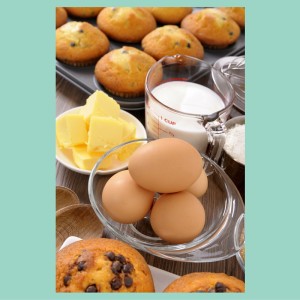 I doubt I was the first. In fact, I know I wasn't as there are a couple of web domains with it in, I know, I tried to buy them when setting up this blog. I'm also not likely to be the last, baking is so hot right now.
I doubt I was the first. In fact, I know I wasn't as there are a couple of web domains with it in, I know, I tried to buy them when setting up this blog. I'm also not likely to be the last, baking is so hot right now.
As for what it means, well there are many things that go into a cake. I mean many layers to the - oh dear - there is literally no way to explain this without a cake pun.
I use it to cover all aspects of cake design, making, baking and decorating. An all encompassing term for all things cake. And perhaps some yummy not-directly-cake things too. Just to keep it confusing.
It's not especially clever and I doubt it'll win me a Pulitzer or make it into the Oxford Dictionary any time soon. But I like it.
So there you have it folks, Cakery - all things cake.

















